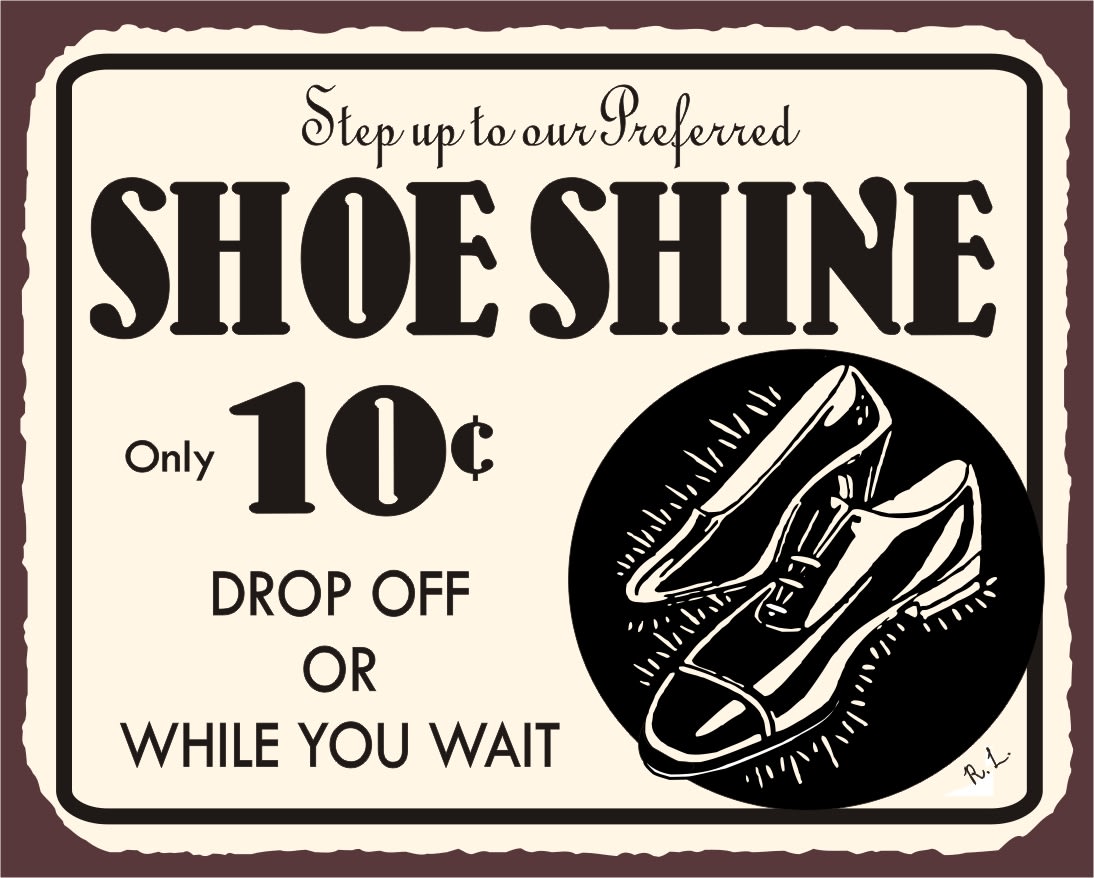It is a mitzva to gladden the bride and groom; one way this is customarily done is by dancing before them and attending to their needs. Most of us are accustomed to see guests bring glasses of water to the bride and groom or to fan them to cool them off; another kind of service that is remarkably common is shining the shoes of the groom. What is the inner meaning of this widespread custom?
We explained last week that one of the main purposes of marriage is to cultivate an appropriate relationship to worldly possessions and enjoyments. A single person can subsist on a minimal income and shield himself from the challenges of the world of work, but a married person is generally obliged to devote himself to earning a living. The marriage itself is incomplete unless he provides his wife with a ketuba obligating him to support her in a dignified way (SA EHE 66), and one of the main purposes of marriage is to raise a family – which is an expensive proposition.
Rebbe Natan of Breslav (Likutei Halakhot laws of Yibum) explains that our shoes are an exemplar of our relationship to our possessions. They symbolize our material wealth. One example of this is the blessing we say on donning our shoes, thanking HaShem “Who provides me with all my needs” (SA OC 46:1). Our shoes are in effect all our needs! Likewise our Sages tell us that shoes are a person’s most important possession: “A person should sell even the beams of his house and buy shoes for his feet” (Shabbat 129a). As we have explained in previous columns, the basis for this symbolism is that shoes represent human dignity by elevating us and separating us from the earth, which was cursed by the sin of Adam and Chava who used HaShem’s bounty against His will (Bereshit 3:19).
Since married life is meant to develop a proper relationship to our possessions, and shoes represent this relationship, there is naturally a profound relationship between marriage and shoes, specifically the man’s shoes (since the primary responsibility for supporting the family falls on the man, as the ketuba indicates). We find this relation ship in many places in Scripture.
For example, when the brother-in-law declines to marry his brother’s widow, she makes a public demonstration of removing his shoe, and he is called “The house of the shoeless” (Devarim 25:9-10).
Another example is that of Moshe. When he attained prophecy at the burning bush, HaShem commanded him, “Remove your shoes from your feet” (Shemot 3:5). The Zohar teaches that this meant that he should separate from his wife. (Zohar Pikudei II 222a; see Rashi Bamidbar 12:1. While a normal person is expected to live married life and wear shoes, to face the challenges of the material world, the prophet Moshe was far above this level, therefore he removed his shoes and separated from Tzippora.)
When the anonymous relative of Elimelech declines to both redeem his fields and marry Ruth, yielding to Boaz, we learn, “And he drew off his shoe” (Ruth 4:8). According to one opinion in the gemara (BM 47a), it was the relative who took off his shoe. Ibn Ezra explains that according to this opinion, the shoe itself represents the entire redemption, meaning presumably both the property and the marriage, which the relative gave to Boaz. Again, the shoe is the symbol of both property and married life.
The groom is undertaking a new life, a married existence in which he will be compelled to cope with the responsibilities of livelihood and possessions; a prominent symbol of these responsibilities is the shoe, an intimate possession which provides us with material dignity by elevating and separating from the natural world. It is only natural that we celebrate the wedding and gladden the groom by beautifying his shoes.
[This approach also sheds light on another aspect of this custom. Logically we should expect that the guest would do the best possible job by giving a spit shine, yet we see that this is never done. The above explanation shows why. Spitting is parallel to the removing of shoes as a symbol of separation from married life. When the brother-in-law declines yibum, the widow both removes his shoe and also spits before him. Likewise, when Miriam criticized Moshe’s separation from his wife, the Torah likens her rebuke to having her father “spit before her” (Bamidbar 12:14; see Rashi on 12:1). So a spit shine would exactly contradict the message provided by beautifying the groom’s shoes.]
Rabbi Asher Meir is the author of the book Meaning in Mitzvot, distributed by Feldheim. The book provides insights into the inner meaning of our daily practices, following the order of the 221 chapters of the Kitzur Shulchan Aruch.
The words of this author reflect his/her own opinions and do not necessarily represent the official position of the Orthodox Union.
